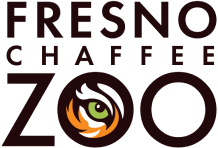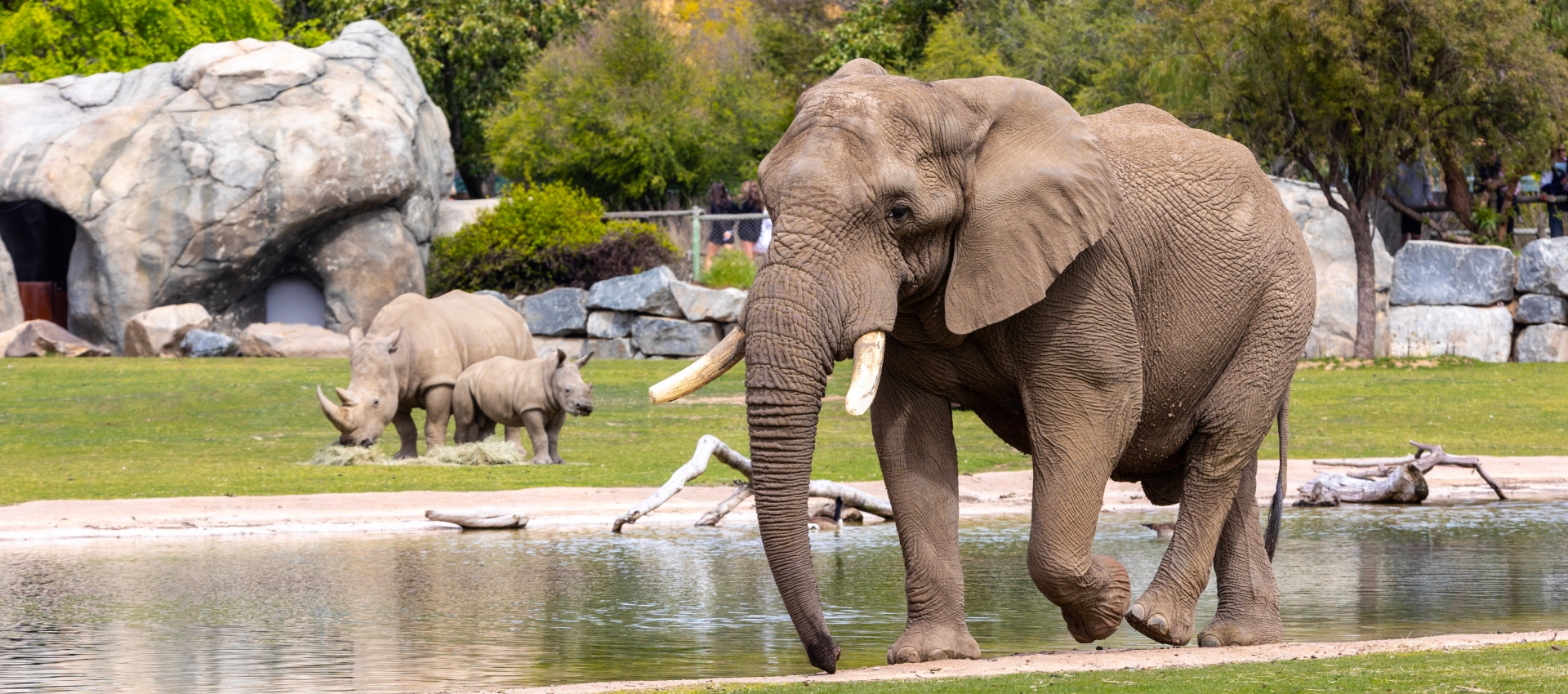Our Exhibits
Discover a world of majestic animals at Fresno Chaffee Zoo. Explore African Adventure with lions, rhinos, elephants, and visit the new Kingdoms of Asia, home to sloth bears, Malayan tigers, and more. Each exhibit offers a unique and immersive experience for visitors of all ages.
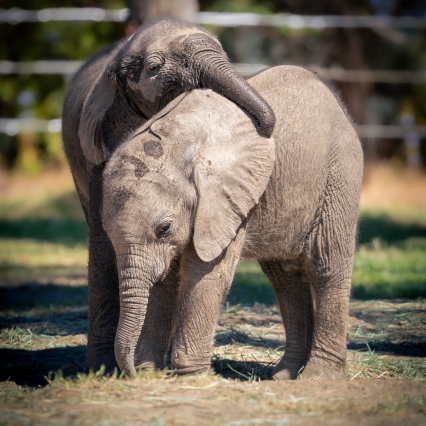
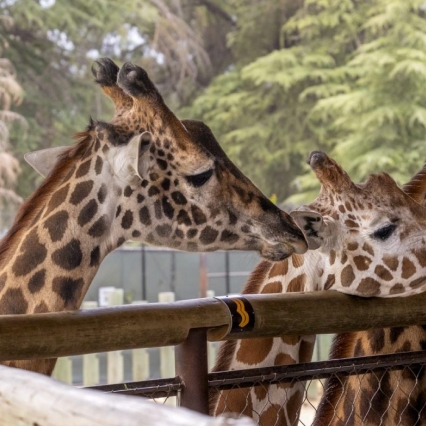
African Adventure
African Adventure is a 13-acre expansion featuring spectacular naturalistic exhibits for lions, African elephants, cheetahs, white rhinos, and more! Be transported to the African savannas while dining at the outdoor patio of Kopje Lodge or experience giraffes up-close at the Twiga Terrace giraffe feeding station. Thanks to Measure Z, this spectacular addition to Fresno Chaffee Zoo offers guests a wildlife experience that is unparalleled in zoos today!
ANIMAL CHATS
White Rhino
Mahali Pool
10AM
African Elephant
Kopje Lodge
11AM
Lion
Lion Habitat
12PM
Cheetah
Cheetah Habitat
12:30PM
Twiga Terrace
Presented by Valley Children’s Healthcare
Welcome to Twiga Terrace, our giraffe feeding station! Get eye to eye with our tower of giraffes while their long necks grab lettuce right out of your hands! Giraffe feeding is $5 per person for Zoo members and $6 per person for non-members.
Check out our Behind-the-Scenes featuring animals from African Adventure: Tiny Trunk Time, Tall Tails, and Wild About Warthogs.
Trail Tiles
Support the Zoo and make a lasting mark with the purchase of an African Adventure Trail Tile.
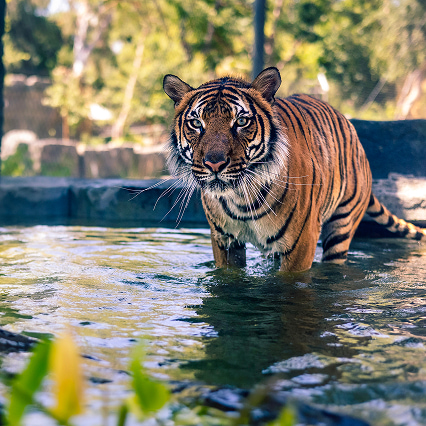
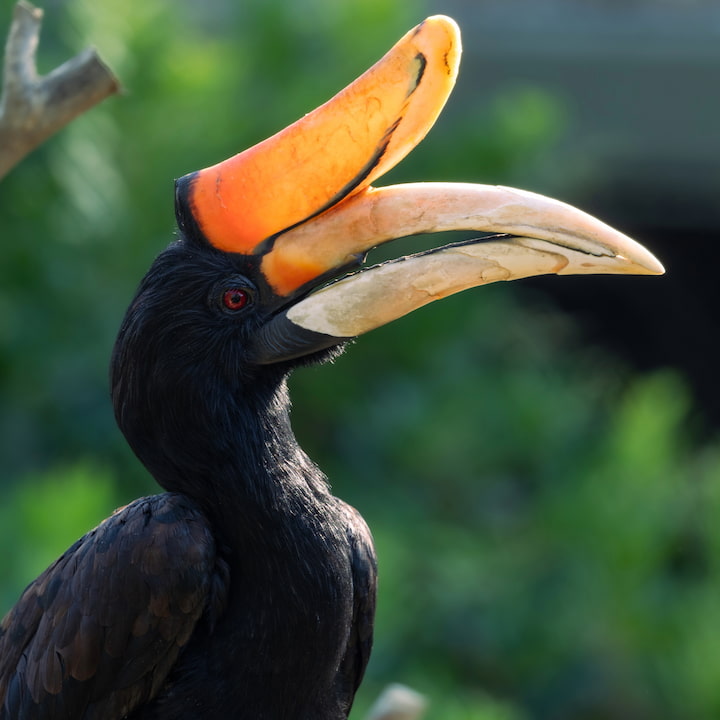
Kingdoms of Asia
Transforming the heart of the Zoo, Kingdoms of Asia immerses guests in the culture and wildlife of Southeast Asia. Themed after Angkor Wat in Cambodia, the exciting Kingdoms of Asia project creates expansive new exhibits for Malayan tigers, Komodo dragons, sloth bears, Asian songbirds, and more. This exhibit was made possible by Measure Z.
ANIMAL CHATS
Sloth Bear & Otter
Sloth Bear/Otter Habitat
11:30AM
Tiger
Tiger Habitat
2:30PM
Check out our Behind-the-Scenes featuring animals from Kingdoms of Asia: Sloth Bear Necessities and Dragon Discovery.
Trail Tiles
Support the Zoo and make a lasting mark with the purchase of a Kingdoms of Asia Trail Tile.
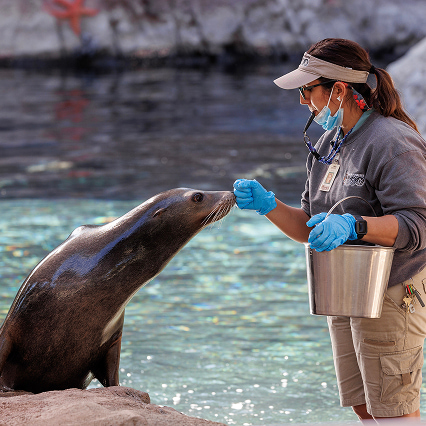
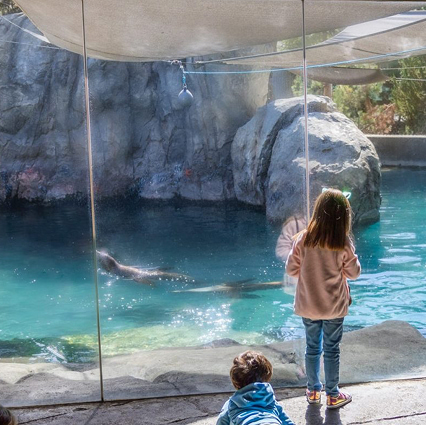
Sea Lion Cove
Modeled after Point Lobos, California, Sea Lion Cove is one of the country’s most unique and beautiful sea lion exhibits. You’ll immediately be transported to the California Coast with the sound of crashing waves, salty sea air, barking sea lions and harbor seals. Gaze in wonder at these amazing animals from four unique vantage points including the 35-foot underwater viewing window where you can watch the seals and sea lions glide gracefully beneath the water. Sea Lion Cove was made possible by the support of the community through Measure Z.
ANIMAL CHATS
Sea Lion
Sea Lion Cove Theater
10AM
Sea Lion
Sea Lion Cove Theater
3PM
An Award Winning Exhibit
In September 2014, Fresno Chaffee Zoo was presented with the prestigious Association of Zoos and Aquariums Top Honor Exhibit Award for Sea Lion Cove. This is the highest honor the AZA gives to zoo and aquarium exhibits, recognizing excellence in the area of live animal display and exhibit design.
Check out our Behind-the-Scenes featuring animals from Sea Lion Cove, Fun With Flippers.
Sea Lion Cove Tiles
Support the Zoo and make a lasting mark by joining our donor wall.
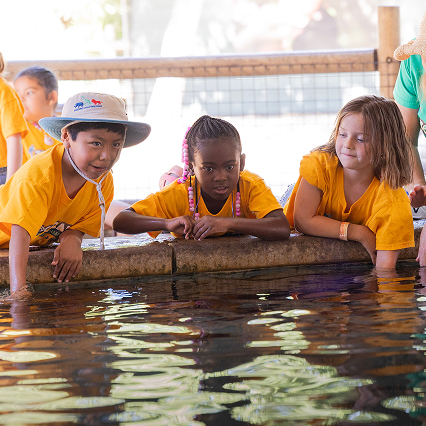
Stingray Bay
Get up-close with sharks and rays at Stingray Bay. Touch or feed cownose and southern stingrays as they glide beneath your fingertips and learn more about the nurse and whitespotted bamboo sharks at home in this exhibit. Admission is free for Zoo members and $5 per person for non-members. Feedings are $3 each, while supplies last. This exhibit was made possible by Measure Z.
ANIMAL CHATS
Shark
Stingray Bay
12:30PM
Check out our Behind-the-Scenes featuring animals from Stingray Bay: Gills & Thrills.
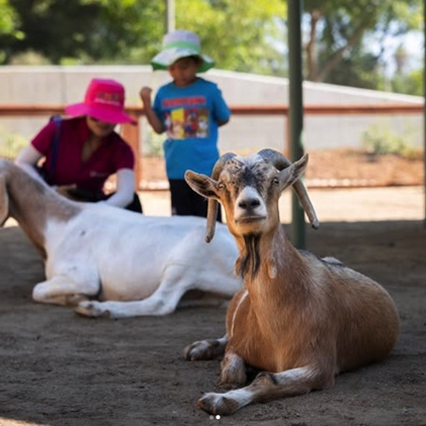
Valley Farm
Learn about Fresno and the Central Valley’s global impact in agriculture while getting up-close with our herd of Nubian and Nigerian dwarf goats. The Zoo’s Valley Farm exhibit offers guests a meaningful, immersive, and interactive experience that reflects the invaluable agricultural productivity and heritage of Fresno County.
Get Growing
Whether it’s one potted plant or a grove of fruit trees, growing produce at home can be a fun and rewarding way to add fresh, healthy food to your diet.
The plants grown at Valley Farm help feed and enrich the animals at the Zoo, adding seasonal variety to the meals of elephants, tortoises, macaws, and more!
Cultivating a Thriving Fresno
Through your support of the Zoo, you can help ensure a sustainable and positive impact on the communities of our Central Valley.
Help ensure a sustainable and positive impact on the communities of the Central Valley by supporting the Zoo through the purchase of a laser engraved fruit crate side or slat.
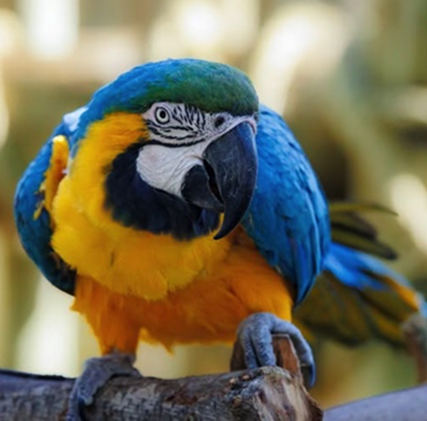
Tropical Rainforest
Fresno Chaffee Zoo’s Tropical Rainforest welcomes guests to a bird paradise. This open-air, walk-through exhibit is a celebration of flight as birds glide through the trees above visitor’s heads for an authentic rainforest experience. Guests can also enjoy the peaceful sounds of waterfalls and watch as birds swim in a series of small pools throughout this naturalistic exhibit.
How many species can you find?
Look high and low as you explore. Tropical Rainforest houses a variety of birds such as Inca terns, blue-throated macaws, scarlet ibis, puna teal, and black-necked stilt.
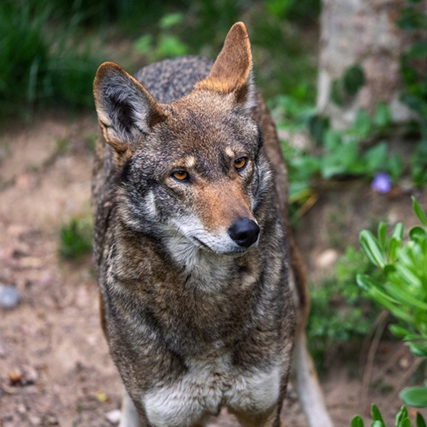
Wolf Woods
When first entering the Zoo, you may find yourself greeted by the howl of our red wolf pair. The American red wolf is the most endangered wolf on the planet. Historically common throughout the Eastern and South Central United States, these wolves have been hunted to near extinction in the wild.
Red Wolf Recovery
The U.S. Fish and Wildlife Service began their recovery efforts by trapping wild wolves to establish a captive breeding program with the intention of reintroducing the species in the wild. In 1984, the Association of Zoos & Aquariums developed a Red Wolf Species Survival Plan (SSP) program to grow the population, making reintroduction efforts possible.
Fresno Chaffee Zoo has participated in the Red Wolf SSP, for over 30 years, with several successful litters. We are one of over 40 partnering institutions dedicated to increasing the population under human managed care.
View Resilience: Story of the American Red Wolf, sponsored in part by Fresno Chaffee Zoo to learn more!

Reptile House
Visit the Reptile House to find a wide variety of reptiles and amphibians, including lizards, salamanders, turtles, frogs, and, of course, snakes! Get an up-close look while learning all about these scaly, hoppy, and unique species from around the world.
ANIMAL CHATS
Reptiles
Various – Check Signs on Reptile House
11AM
A Commitment to Care
Thanks to Measure Z, the Reptile House has had several habitat updates since its 1979 opening, including the King Cobra exhibit addition in 2013, which allows Fresno Chaffee Zoo to continue to provide excellent animal care for our reptiles and amphibians.
Check out our Behind-the-Scenes featuring animals from Reptile House: Scales & Tales and Tortally Shellstruck.

Roo Walkabout
Completed in 2016, Roo Walkabout is an Australian walk-through exhibit which features red kangaroos, wallaroos, wallabies, emu and kookaburras in a unique, multi-species exhibit setting!
Check out our Behind-the-Scenes featuring animals from Roo Walkabout: Roo Rendezvous
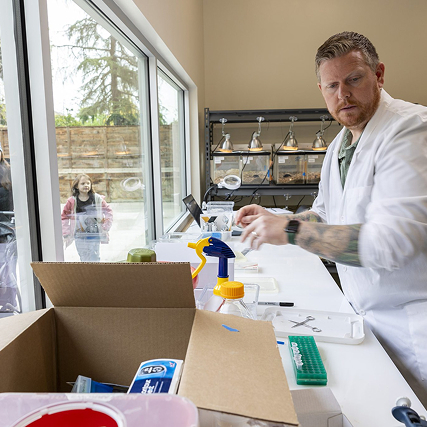
Conservation Action Center
The Conservation Action Center serves an important role as a place to strengthen and expand the Zoo’s work in local species protection. This project highlights our focus and commitment to wildlife at our doorstep, such as the blunt-nosed leopard lizard. This climate-controlled, bio-secure building is the primary location for breeding and raising the endangered blunt-nosed leopard lizard. The lizards hatched here are carefully studied to help expand our understanding of this local species while allowing guests to witness species recovery in action.
A Window Into Saving Local Wildlife
Located just past Roo Walkabout, get an up-close look at our Zoological Care staff hard at work sustaining the growing populations of blunt-nosed leopard lizards. The Conservation Action Center is a major stepping stone for the protection of local wildlife in the Central Valley.
Visit our Conservation page to learn more.
Meet Our AniMals
- View all
- Mammals
- Birds
- Reptiles & Amphibians
- Fish
